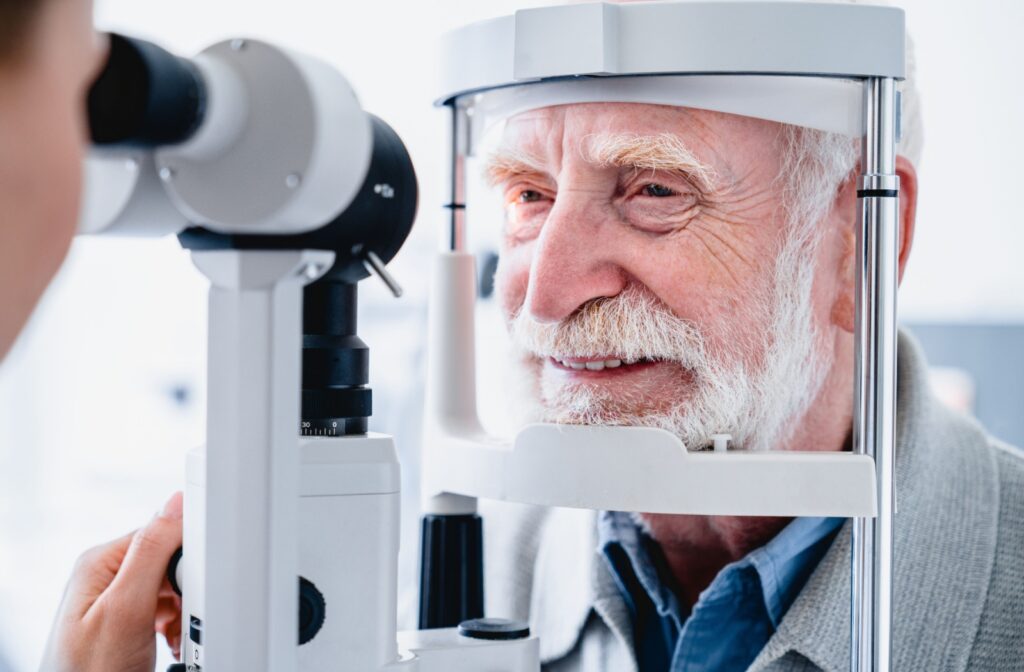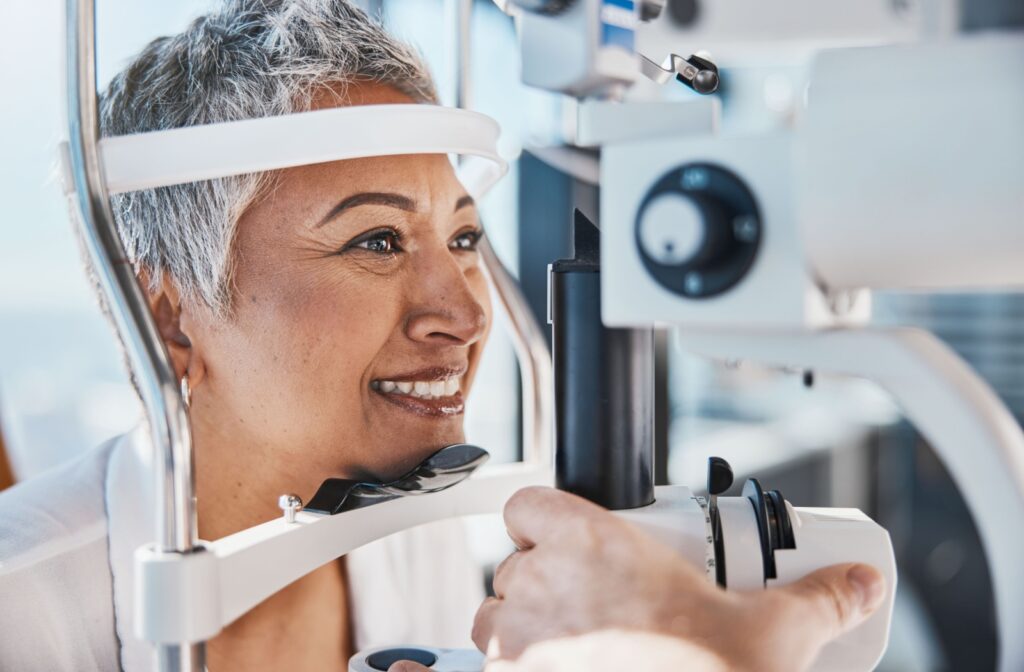LASIK is well-known for being able to correct all kinds of vision problems like myopia, astigmatism, and more. But sometimes, vision problems aren’t simple—like hyperopia. This condition, also known as farsightedness, develops due to an error with the shape of your eye. So can hyperopia still be corrected with LASIK?
LASIK still works for hyperopia. During the procedure, your surgeon will carefully reshape your cornea so it can properly refract light. This can help restore your clear vision, but it’s important to note that not everybody qualifies for LASIK.
What is Hyperopia?
The eye is a complex organ. Light needs to enter through the clear front part (the cornea) to bend and focus on the retina at the back of the eye. However, if you’ve ever used a magnifying glass, you know how much things can change when this distance is slightly off. Images become blurry even when the shift is subtle.
Refractive errors develop when the eye isn’t shaped properly. Rather than focusing on the retina, light rays focus somewhere else; this quickly leads to blurry images and eye strain when trying to focus at different distances.
If the eye grows wider than it is long or the cornea grows too flat, it’s called “hyperopia.” Light rays aren’t able to properly converge on the retina, and you can’t see nearby objects clearly—but distant objects remain clear. This can be problematic when you try to focus on anything nearby.
The Early Signs of Hyperopia
While conditions like nearsightedness are easily detectable, hyperopia can be a little trickier. Some people don’t notice that they’re struggling to focus on things nearby. Try to watch out for symptoms such as:
- Eye strain or fatigue, especially after reading or writing
- Blurry vision when looking at close objects
- Frequent headaches
- Squinting to see better up close
- Difficulty concentrating on tasks that require seeing up close
If you or your child showcases these symptoms, it’s important to book an eye exam with your optometrist. Hyperopia can be difficult to self-diagnose, so instead, talk to a professional. They’ll be able to recommend the right approach going forward.
What is LASIK?
LASIK, or laser-assisted in situ keratomileusis, is a popular surgery designed to correct the underlying cause of refractive errors—the shape of the eye and cornea. This procedure is simple, relying on a precise laser to reshape the cornea to give your eye the ability to properly refract light.
This surgery is relatively non-invasive, and your eyes are numbed beforehand so you don’t experience pain. During the surgery, your surgeon will carefully work to return your eye to a shape that refracts light without the need for corrective lenses or contacts.

Who Qualifies for LASIK?
It’s important to note that not everybody is a candidate for LASIK surgery. Because the surgery reshapes the cornea, you need to have a stable and thick enough cornea to withstand the procedure.
The requirements can vary slightly depending on location, but ideally, you should:
- Be over the age of 18
- Have a prescription that has remained stable for at least one year
- Have no active conditions (like dry eye, abrasions, or infections)
- Be in generally good overall health
- Not be pregnant or nursing
To determine if you qualify for LASIK, you need to visit an optometrist for a laser eye surgery consultation. They’ll assess your suitability for this procedure depending on your specific situation, and if they determine that you’re eligible, they’ll recommend you to an experienced surgeon in your area.
What to Expect from LASIK
Before your procedure, your surgeon will apply numbing eye drops (or local anesthetic if needed) to keep you comfortable during the surgery. This helps prevent any significant discomfort.
Then, the steps are relatively simple:
- The surgeon uses a laser to create a thin flap on the surface of your cornea.
- The surgeon lifts the flap and uses another laser to reshape the cornea so that light focuses correctly on your retina.
- The flap is carefully repositioned over the treated area without the need for stitches.
Once the surgery is complete, you’ll be given special antibacterial eye drops. These help prevent infection while promoting postoperative healing. Make sure you follow any and all of your surgeon’s aftercare instructions!
You may experience some mild discomfort for a few hours after the surgery. This is natural, so try to avoid scratching or rubbing your eye. These sensations should go away quickly, and you’ll likely notice improved vision within a few days! Over the next few weeks, your optometrist will have you return for follow-up appointments so they can monitor your recovery.
Learn If LASIK is Right for You; Contact Us
If you’re dealing with hyperopia, LASIK might be the answer you’ve been looking for. So come talk to our team at Total Vision Campbell. During your consultation, we’ll be able to help you find the right path going forward. Book an appointment with us today!



